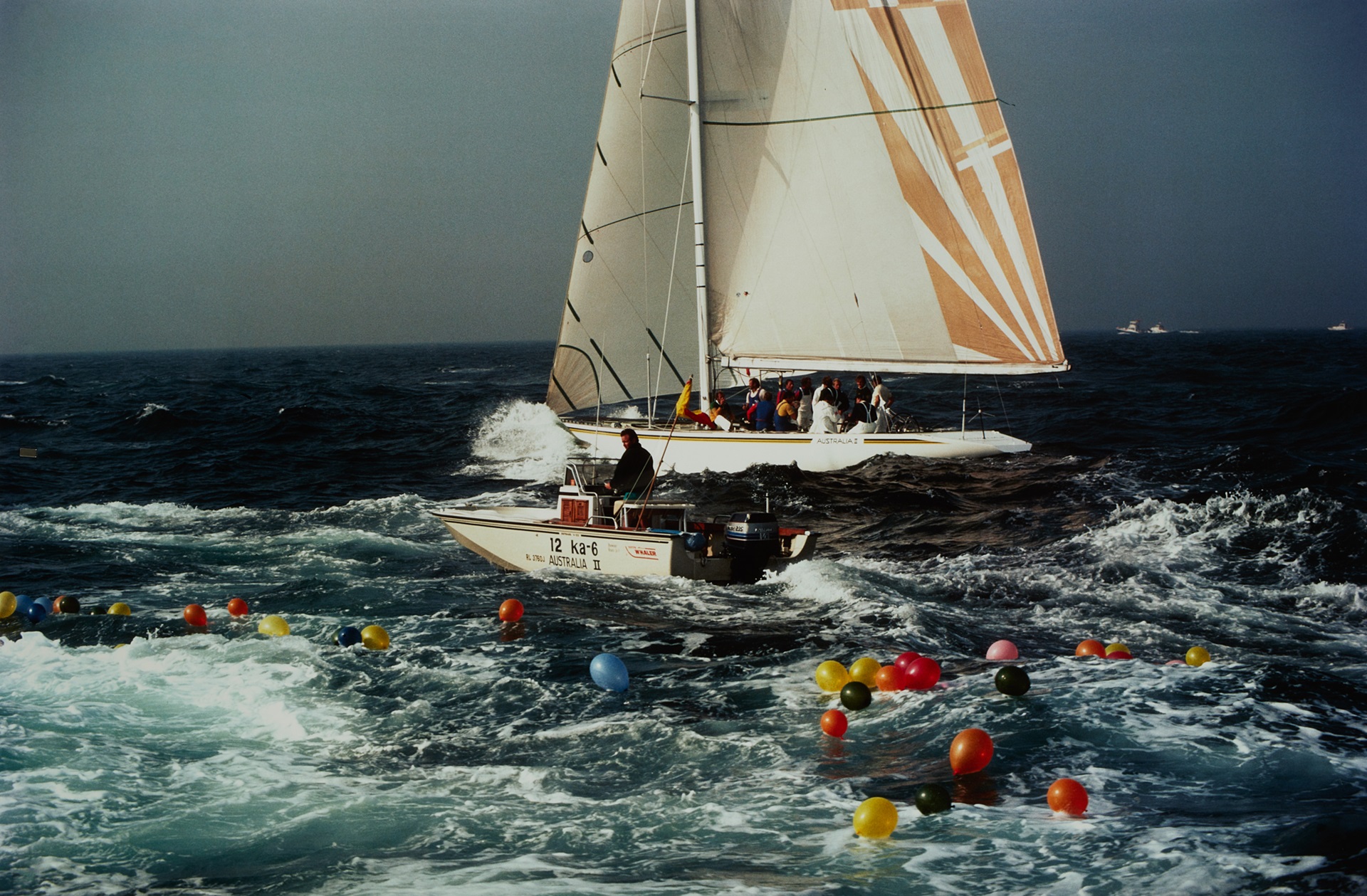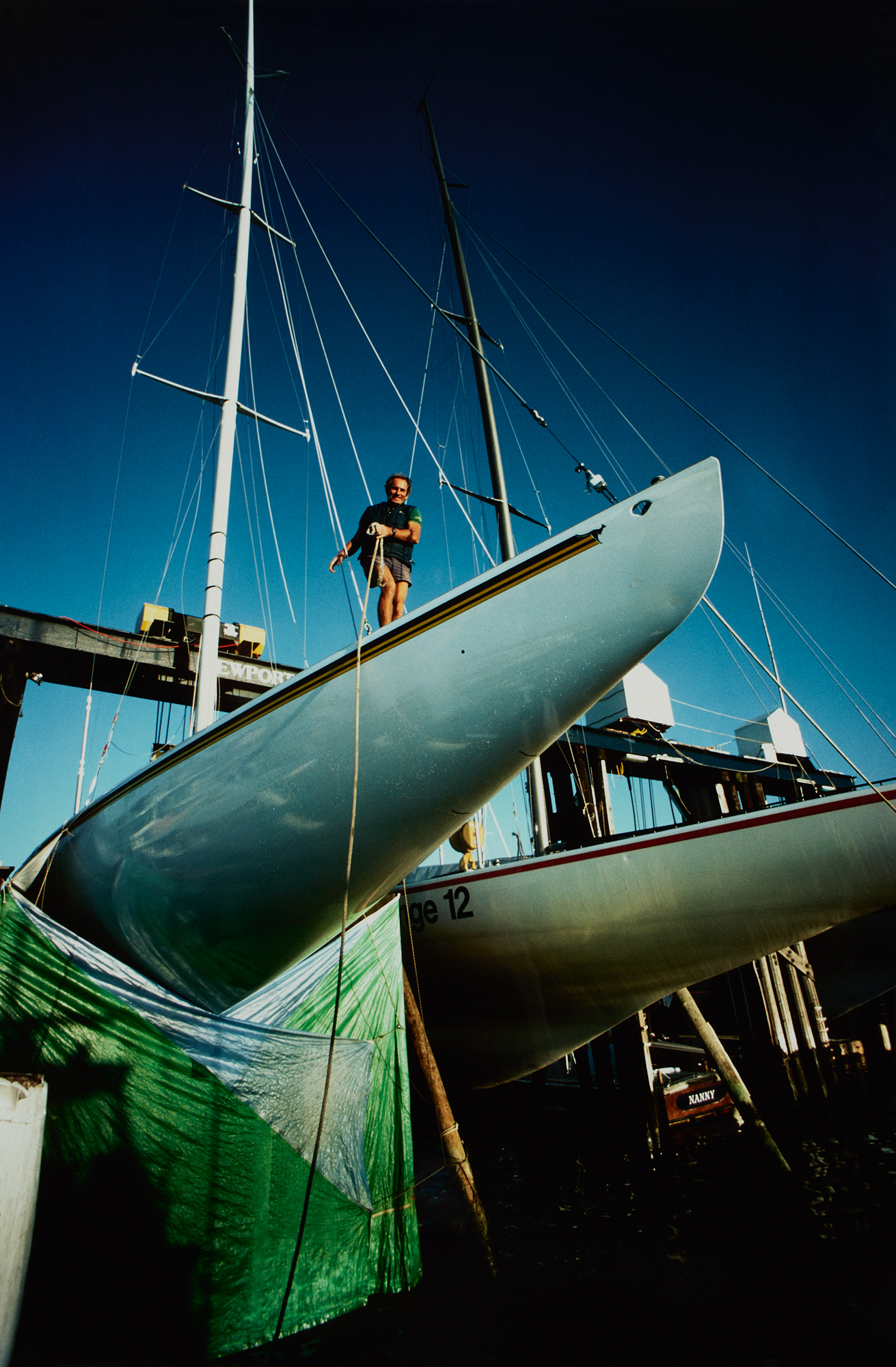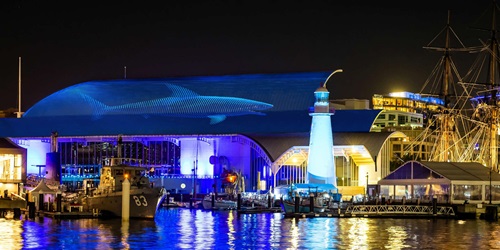Bob Hawke, Alan Bond and Ben Lexcen were key players in Australia II's extraordinary 1983 America's Cup victory
It was the David and Goliath story that put Australia on the world sailing map, an extraordinary feat that ended the longest winning streak in any sport, anywhere in the world.
And with a rich list of characters including a larrikin prime minister, a millionaire businessman whose dodgy business dealings funded the enterprise, and a genius inventor whose top-secret keel design was to revolutionise the yachting world, the story of how Australia snatched the famed America's Cup from the New York Yacht Club (NYYC) in 1983 is the stuff of legend.
In the storied 132-year history of the cup, no challenger had come close to threatening the dominance of the well-to-do NYYC, which had held the trophy since winning a sailing race around the Isle of Wight in the UK in 1851.
Indeed, some NYYC members seemed to regard the prestigious trophy as the club's unassailable birthright, over which it would have permanent custody.
Alan Bond, however, had other ideas.

The national hero who became a villain
Yet to be unmasked as a corporate villain who swindled millions from investors and taxpayers, Bond in 1983 was well on the way to becoming the national treasure the America's Cup would turn him into, albeit temporarily.
Back then he was the rags-to-riches success story that so many Australians aspired to be, the humble sign writer turned millionaire property developer who had migrated from the UK in 1950 without a penny to his name.
Over the subsequent decades, his burgeoning business empire would go on to encompass land developments, breweries, television stations, diamonds, oil, gold, an entire English village, a Gold Coast university and even world-famous Impressionist paintings, to name just a few of his colourful enterprises.
Bond's passion for making money was matched by his skill at self-promotion, and in the America's Cup he sensed an opportunity to make a name for himself on the world stage.
Journalist Paul Barry's biography, The Rise and Fall of Alan Bond, quotes him telling a journalist: "Anyone who considers racing for the America's Cup isn't a business proposition, is a bloody fool."
If increasing his profile and leveraging opportunity was the aim, Bond succeeded wildly.
By 1983 he'd already financed three America's Cup challenges, earning an Australian of the Year award for his efforts in 1978.
And his perseverance was to pay even bigger dividends on the fourth attempt when Australia II crossed the finish line on September 26, 1983, to snatch the unlikeliest of victories from the jaws of defeat, making Bond a national hero and giving him the sort of wall-to-wall publicity even he could have scarcely dreamed of.
The top-secret advantage
Like Bond, boat designer Ben Lexcen was a self-made man with little formal education.
After designing three previous boats for America's Cup challenges, only one of which managed to win a single race, Lexcen knew a radical new approach would be needed to win the cup.
Ever the gambler, Bond was prepared to back his man.
Lexcen was sent to a sailing design institute in the Netherlands, reportedly with a blank cheque from Bond, to work on a new design.
What emerged from months of testing has gone down in the annals of sailing history.
Lexcen had developed a radical new 'winged' keel, like nothing the sailing world had ever seen before which was to herald a revolution in yacht design.
The winged keel made Lexcen's new boat, Australia II , much faster and more manoeuvrable – and importantly, the Australians' secret weapon also became a psychological weapon.
The team went to great lengths to hide it from the outside world and the Americans in particular, shrouding the keel in tarpaulins as it was transported and hiring armed guards around the clock to protect it from prying eyes.
The unlikely victory
With six unsuccessful challenges behind it, beginning in 1962 with media mogul Frank Packer's yacht Gretel, Australia was thought to have little chance of winning the imposing sterling silver trophy from the iron grip of the US.
But when Australia II began to dominate the trial races to choose a contender for the 1983 America's Cup, the scions of the NYYC were determined to do everything in their power to win.
First, they tried to buy the keel design from the Netherlands testing facility where it was developed, and when that failed, they repeatedly tried to claim the keel violated the rules of the race, though it had been earlier deemed allowable. That tactic also failed.
Nonetheless, the 1983 competition had begun in emphatic style for the US team on their boat Liberty, which easily defeated the Australians in the first two races, helped by equipment failure on Australia II .
Then unexpectedly, the Australian boat won the third race of the series, only to lose the fourth, leaving the Americans in a commanding position at 3-1 in the best-of-seven series.
But when the Australians snatched victory in the fifth, then the sixth race, sailing fever engulfed the nation and suddenly everyone wanted to be a part of it.
It was the first time in 132 years the tournament had even run to a seventh race – usually the Americans won it convincingly in just four – and tensions ran high.
The defining moment came in the middle of the night Australian time.
After starting the race well behind Liberty, Australia II surged forward in the last leg of the nail-bitingly close final to cross the finish line ahead by a convincing 41 seconds.
Improbably, the cup was Australia's.
The nation's pride
Forty years on, it's almost impossible to convey the sheer joy and pride that washed over Australia in the wake of the victory.
Millions had tuned in overnight to watch the coverage on television, and apart from the joyous moment Australia II sailed across the finish line, were additionally treated to images of an ecstatic prime minister, who had rushed to Royal Perth Yacht Club for the celebrations.
Dressed in an unforgettable jacket emblazoned with the word Australia and doused in champagne, an almost hysterically excited Hawke famously declared: "Any boss who sacks anyone today for not turning up is a bum".
Waking up bleary-eyed the next day, it was as if the country had taken leave of its senses.
Boxing kangaroo flags decorated shops and houses (a windfall for Bond who owned the image), those that had taken Hawke's advice to take the day off flocked to pubs and clubs to celebrate, and television and talkback radio was giddy with the excitement of it all.
The anthem of the Australia II team, Men at Work's Down Under , was played incessantly, and the nation revelled in the glory.
It was more than just a sporting contest. Somehow this relatively obscure tournament held on the other side of the world had united the country in joy and excitement.
Australia loves an underdog and the country's larrikin spirit, embodied in its prime minister, was elevated to new heights by the minnow yachting syndicate from an obscure sailing club in Perth trouncing the might of the US establishment.
The country erupted in a celebration that was to last weeks, the culmination of which was the triumphant return of the boat and its crew to Australia a month after their stunning victory.

Perth's moment of glory
Home city Perth threw a huge parade through the city and a day-long concert on the city's foreshore featuring the crème de la creme of the 1983 entertainment scene, including Peter Allen and the now disgraced Rolf Harris.
More than 200,000 people are estimated to have turned out that day – nearly a quarter of the city's population – to cheer on the conquering heroes and get a glimpse of the famed trophy.
Freelance photographer Roger Garwood remembers it well, and his anecdote about that time encapsulates the heightened emotions many felt.
Inundated with requests from editors around the world for an image of the cup itself, Mr Garwood phoned Royal Perth Yacht Club to ask if he could photograph it, and was surprised to be told the club would deliver it to his home in Fremantle.
"The cup had arrived in a Holden car driven by a security guard," he said.
"It was in a Perspex case, sitting on the front passenger seat and strapped in place by the seat belt.
"We carefully unloaded it and carried it down the hallway to the living room where it was taken from its case.
"Thus [my home] was the first place the cup visited in Fremantle and arguably the first private home in Australia."
Without telling him what was in store, Mr Garwood urged his parents — mother Ethel and his sailing mad father Oliver — to come over quickly.
"They had no clue and walked into the living room where the old boy, now 82, was totally dumbstruck," Mr Garwood recalled.
"He stood for a few seconds staring at the cup, not quite understanding how this moment had come about.
"Then he burst into tears."
- X (formerly Twitter)
- Arts, Culture and Entertainment
- Community and Society
- Horse Racing
- Human Interest
- Other Sports
Popular searches
Popular pages.

Show us the Keel: Winning the America’s Cup in 1983
Australia II has become one of the nation’s most recognisable vessels, thanks to that extraordinary America’s Cup win in 1983. Almost everyone knows about its upside-down winged keel designed by Australian Ben Lexcen that was unbeatable that year.
In May 1981 Ben Lexcen sent this cryptic telex message from Wageningen (Netherlands) to Perth:
" ABOUT TO TAKE YACHT DESIGN INTO THE SPACE AGE DARTH VADER LOOKS GOOD IN COMPUTER IN 3 DIMENSION WILL TEST ON WEDNESDAY 10th JUNE BEN SKYWALKER" Lexcen had begun testing keel designs with a team at the Netherlands Ship Model Basin. He named his radical concept of an upside-down keel with winglets ‘Darth Vader’, referring to the all-powerful villain of the Star Wars movies that took cinema by storm in 1977 and 1980. Signing his own name after character Luke Skywalker added to the Star Wars connection. Lexcen’s references to Star Wars were part of his quirky character that masked enormous technical ability and non-linear thinking. His drawings chart the progress from a conventional design to the winged profile. His design challenged the strict formula for designing 12-Metre class racing yachts, known as the America’s Cup Rule. A revolution was about to occur. Australia II , with its winged keel was kept literally under wraps before the America’s Cup races off Newport, Rhode Island. To chants of ‘Show us the keel!’ and a media frenzy about what is hidden under the covers, Australia II and its boxing kangaroo mascot sailed to victory and into the hearts and minds of Australians. 26 September 1983 was a monumental day in the history of Australian sport.
Show us the Keel: Winning the America’s Cup in 1983 takes us back to September 1983 when John Bertrand and his crew crossed the line to take the America’s Cup from the USA for the first time in its history. Alongside the design drawings, the exhibition includes a range of items associated with the win. The free exhibition is in Wharf 7, Maritime Heritage Building behind the main museum building and is open from 9am to 5 pm Monday to Friday.
Australian National Maritime Museum, Director, Ms Daryl Karp interviews Australia II skipper, John Bertrand AO on sailing, leadership and the America’s Cup 40 years on.

You might like

Wharfies' Mural


IMAGES
VIDEO
COMMENTS
Today marks 40 years since a yacht club few had ever heard of, from an obscure city Down Under, ended the longest winning streak in any sport in an unlikely victory that rocked the sporting ...
His design challenged the strict formula for designing 12-Metre class racing yachts, known as the America’s Cup Rule. A revolution was about to occur. Australia II, with its winged keel was kept literally under wraps before the America’s Cup races off Newport, Rhode Island. To chants of ‘Show us the keel!’ and a media frenzy about what ...